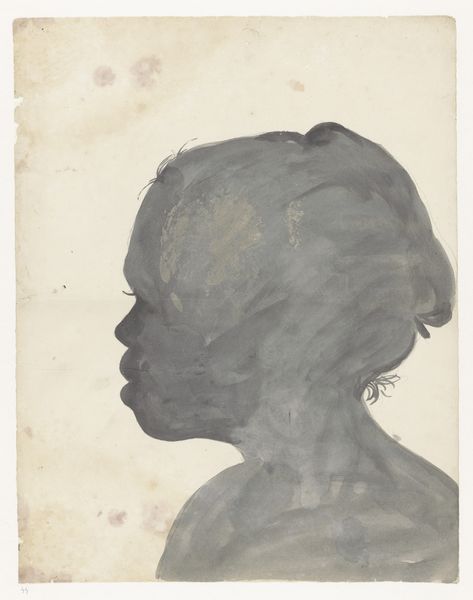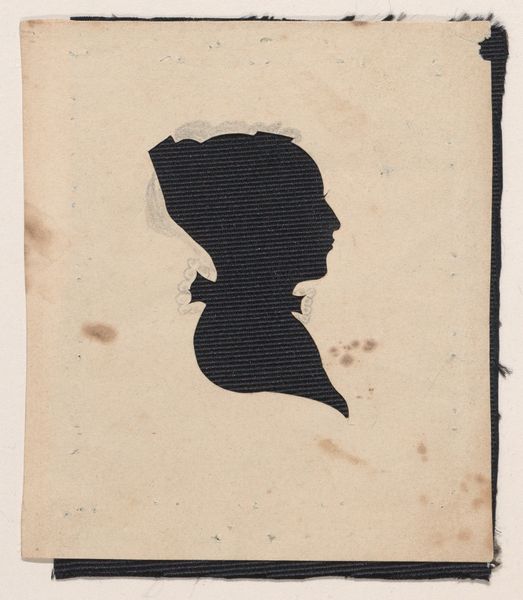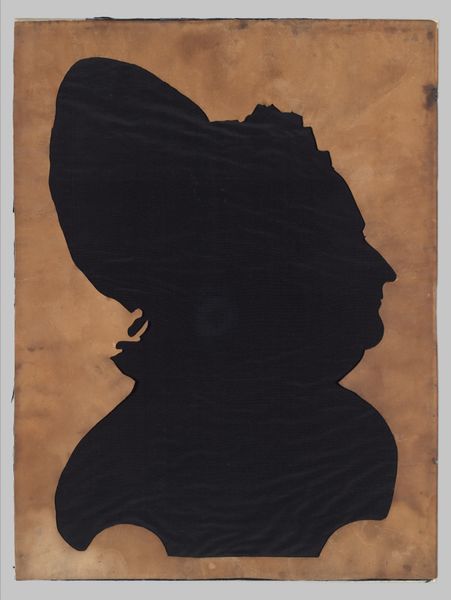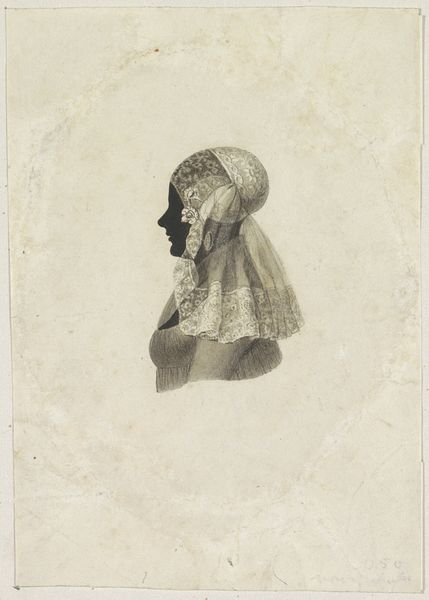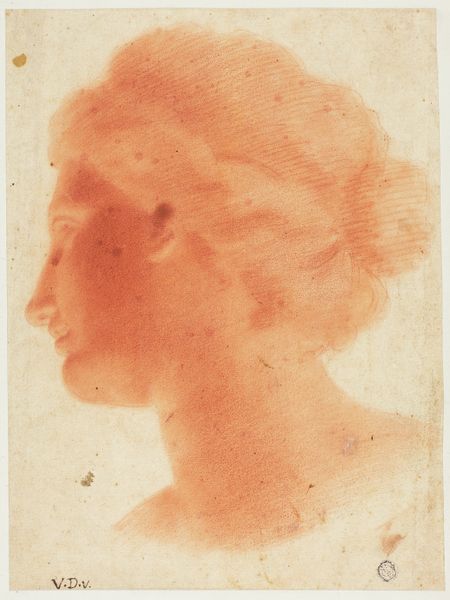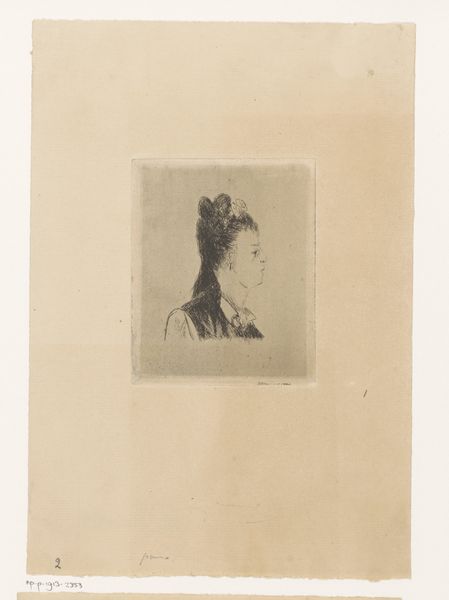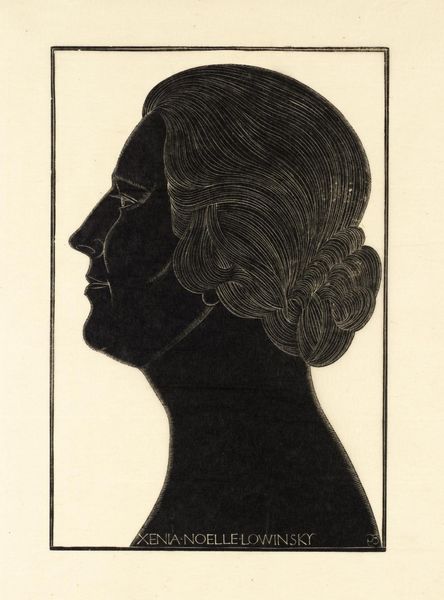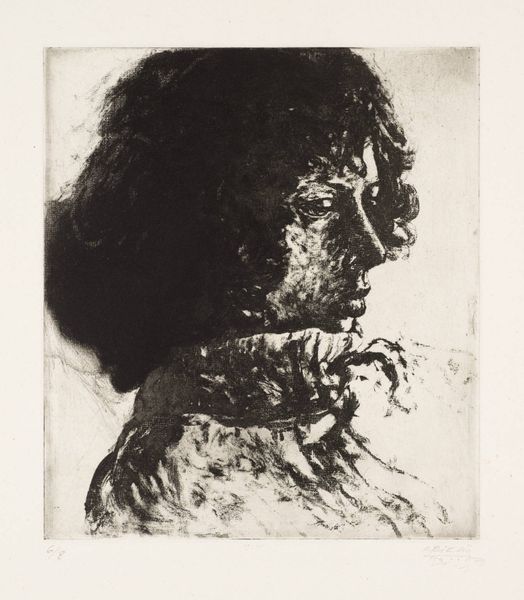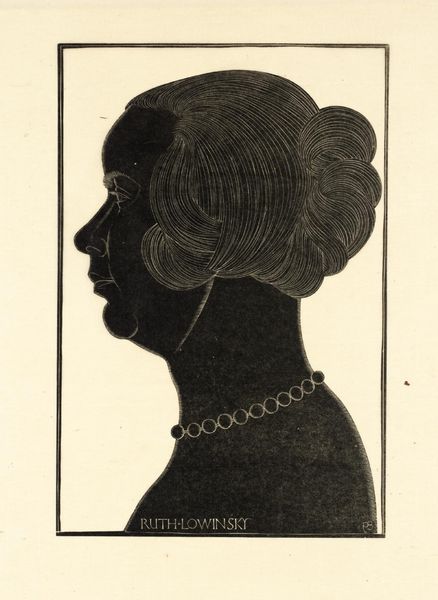
drawing, paper, ink
#
portrait
#
drawing
#
dutch-golden-age
#
figuration
#
paper
#
ink
#
line
#
academic-art
#
watercolor
Dimensions: height 423 mm, width 330 mm
Copyright: Rijks Museum: Open Domain
Curator: This is Jan Brandes' "Silhouetportret van Flora," a drawing in ink on paper dating from around 1783-1784. What's your initial reaction? Editor: Stark. Almost aggressively simple. It is undeniably human but rendered so minimally that the details… or lack thereof… command attention. It makes you think about who this is *not*. Curator: Silhouette portraiture was popular then as a more affordable alternative to painted miniatures. Brandes, in producing this, utilizes a fairly simple means of production to create a potent visual economy. This could have been traced, cut and pasted, and even duplicated via printmaking. Editor: Precisely. The void created by the silhouette invites projection. The name “Flora” is interesting. In Roman mythology, Flora is the goddess of flowers and springtime, a symbol of fertility and renewal. It does offer a fascinating contrast between the potentially idealized subject, suggested by the title, and the stark representation we have before us. Is this meant to imbue its sitter with qualities related to springtime? It lacks typical floreate and springtime symbolic codes. Curator: I agree; what's fascinating is that by withholding detail, the work engages with notions of commodity and accessibility but the title forces a conversation about class. Brandes offers this portrait to a wider market while also alluding to this tradition of portraying women using mythological tropes. Editor: And that flatness, the unwavering blackness… it lends the figure a powerful, almost totemic quality. This Flora is both present and absent, a symbol ripe for interpretation, devoid of typical floral representations. What narratives do you think Brandes seeks to spark using the silhouetted shape? Curator: By stripping away the particular and embracing mass production techniques, Brandes offers a blank canvas. In my view, the work speaks to broader societal constructs about the way labor and identity commingle at all tiers. Editor: For me, it's that enduring allure of symbols, and how they are open to continued interpretation throughout different generations. This piece allows me to reflect on how an image can be loaded with symbolism and meaning that evolves alongside society. Curator: Ultimately, this stark simplicity prompts a compelling reflection on the artist’s relationship to society, and, furthermore, the means used in image production during this time.
Comments
No comments
Be the first to comment and join the conversation on the ultimate creative platform.

